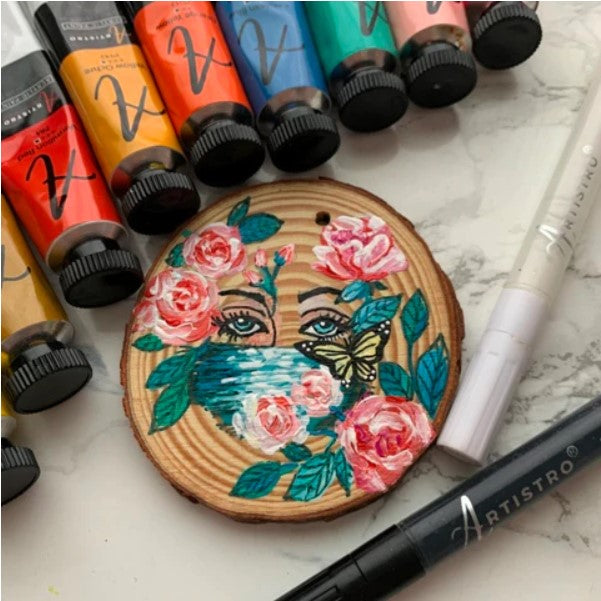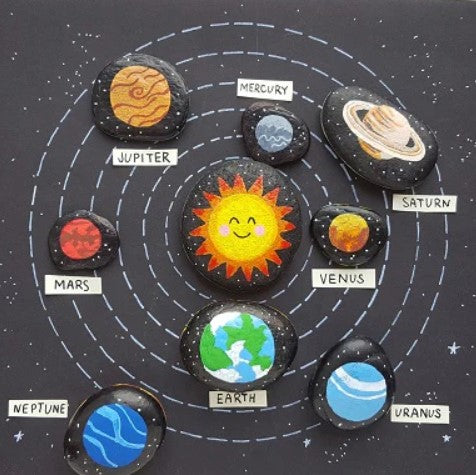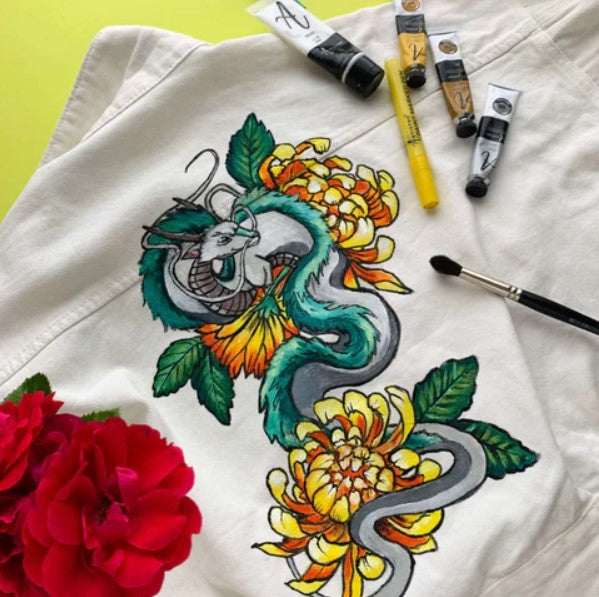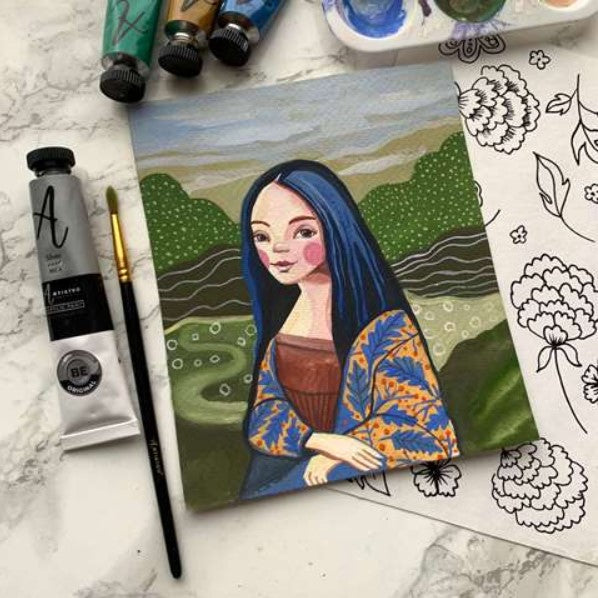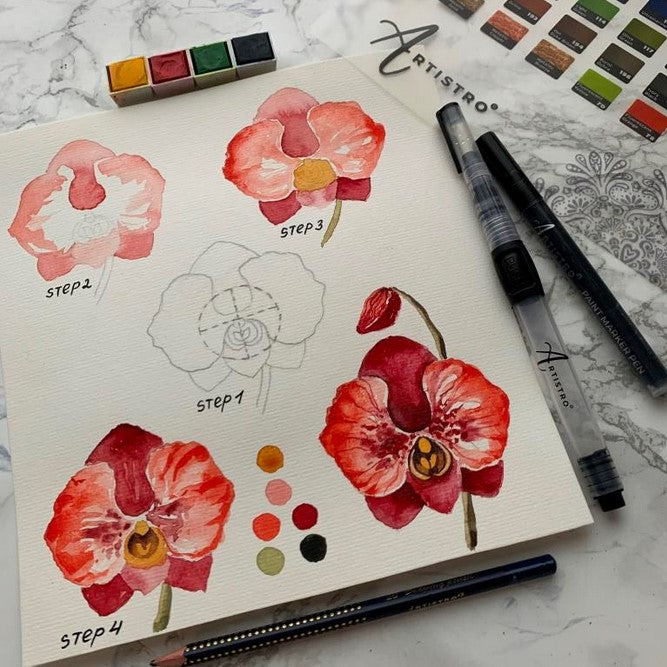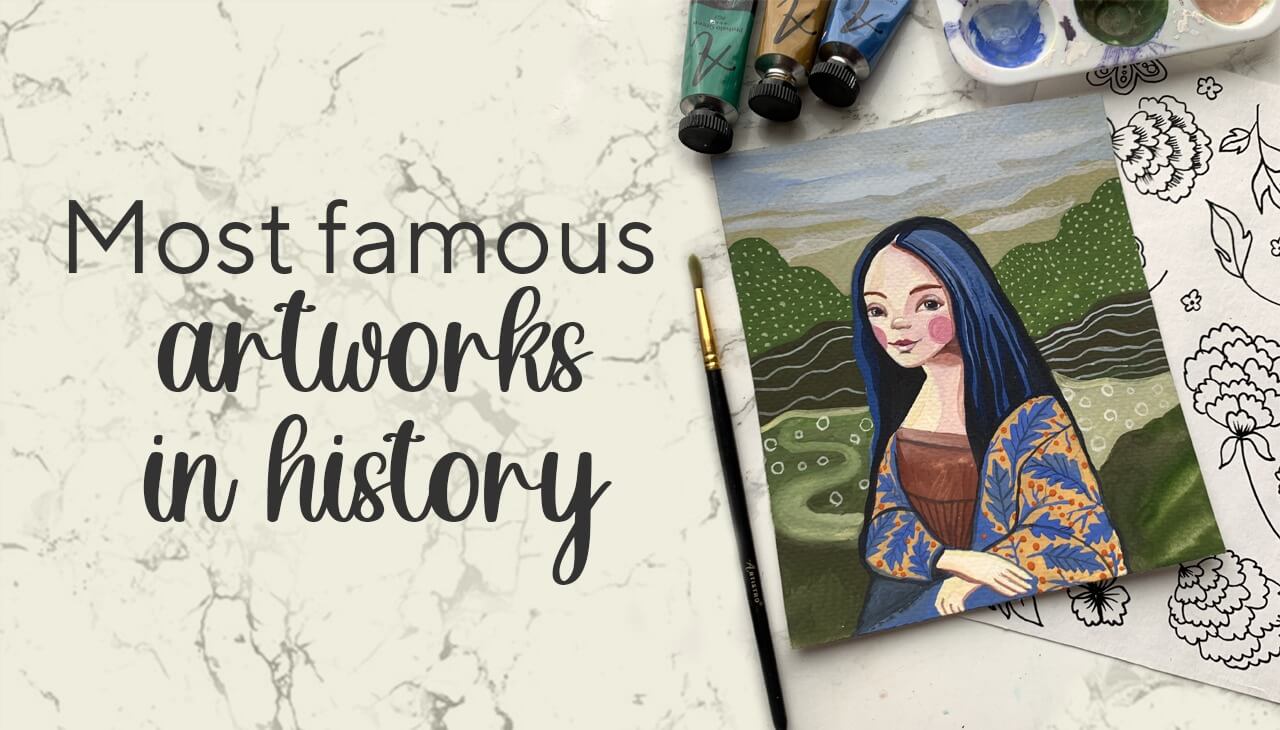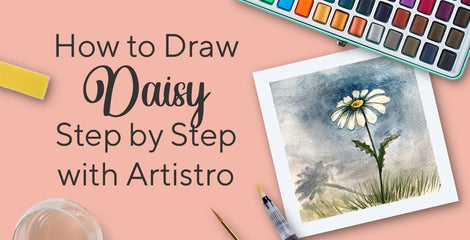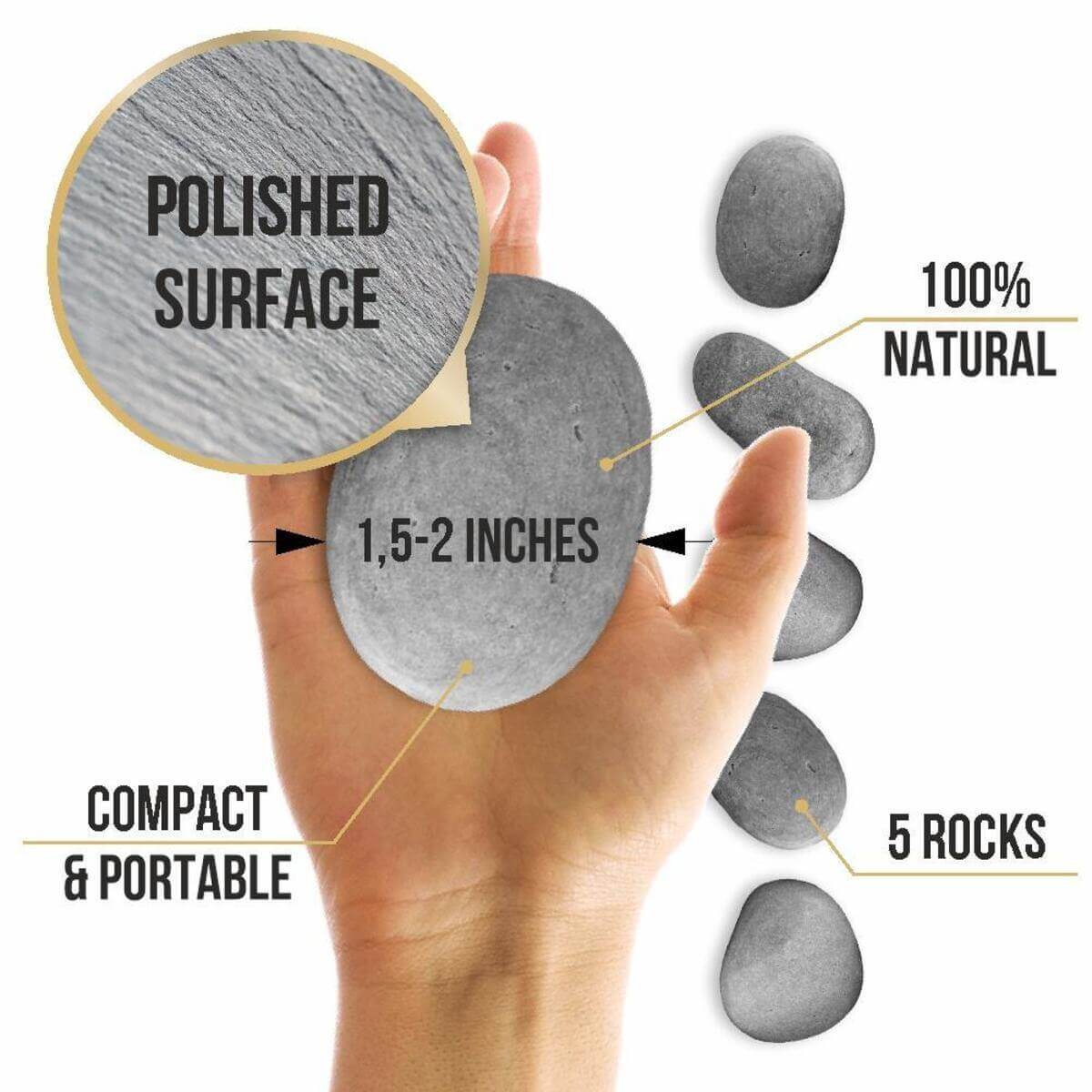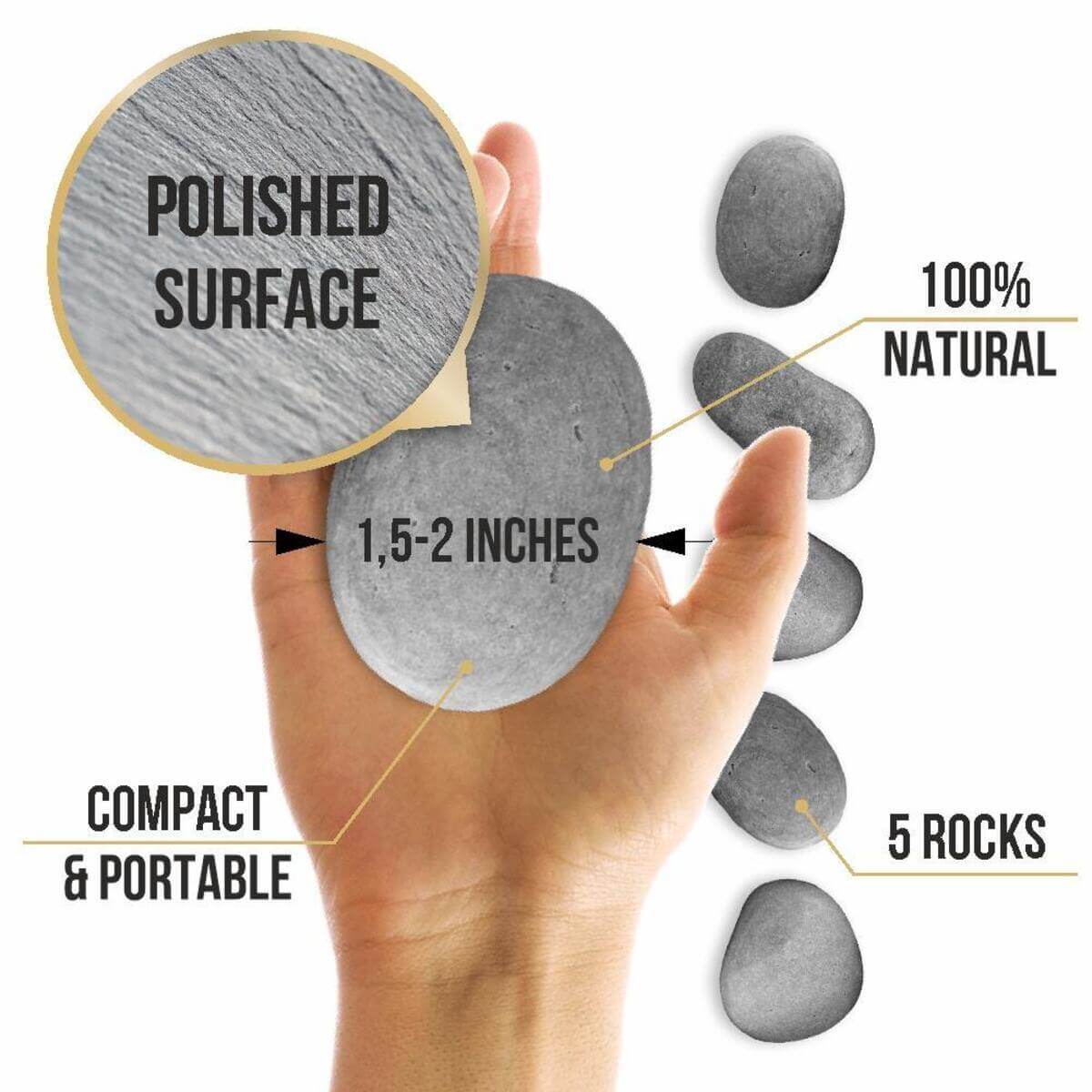Among the works of art ever created by human hands, there are those masterpieces that have left their mark on the history of mankind forever. These artworks set the tone for artistic movement, established fashion trends of their time, dictated a new style and new artistic values. But the most important thing is that they have always inspired millions of people for creative daring and new creative discoveries.
Each era gave birth to its own Genius, its great creator, whose name and masterpieces will forever remain a role model, even through the centuries. Every great artist has unique artworks that are known and loved all over the world. It is about these iconic artworks that we want to remind you in our article to enjoy the greatest masterpieces in history together once again.
The most famous paintings of all time
1. Mona Lisa by Leonardo da Vinci (1503-1505)

Probably the most famous painting in the world is Leonardo da Vinci's La Gioconda, better known as Mona Lisa. This painting is a portrait of Madame Gherardini, personifying the ideal woman of the Renaissance. They tried to damage the painting more than once, and in 1911 it was also kidnapped, returning only 2 years later. Admiration for it truly knows no bounds: Napoleon Bonaparte even removed it from the museum and ordered to hang it in his own bedroom. The painting is officially declared priceless, which is not surprising, as this masterpiece is the best art of all time. The only existing price is its $ 3 billion insurance. Mona Lisa is currently kept in the Louvre, Paris.
2. The Birth of Venus by Sandro Botticelli (1486)

Another of the most famous paintings is The Birth of Venus. Botticelli's painting illustrates the myth of the birth of Aphrodite. The beautiful goddess drifts to the shore in a sea shell, driven by the Zephyr's wind (West wind), and on the shore she is met by one of the Graces. The Birth of Venus is well preserved thanks to the fact that Botticelli applied a protective layer of egg yolk to the painting. This masterpiece is kept in Florence in the Uffizi Gallery.
3. The Creation of Adam by Michelangelo Buonarroti (1511)

Michelangelo's fresco The Creation of Adam, which adorns the ceiling of the Sistine Chapel in the Vatican Palace, is the fourth of the nine famous art pieces of the central composition dedicated to scenes from the Book of Genesis. The fresco illustrates an episode of the first human being creation by God. In addition to depicting ideal human forms, the fresco is one of the first attempts in the history of art to depict the God himself.
4. The Last Supper by Leonardo da Vinci (1495—1498)

For more than 500 years of its existence, the famous fresco The Last Supper has been restored at least five times, and the last restoration took 21 years. This fresco by the great Leonardo depicts Jesus' last supper before his betrayal, arrest and death. In addition to composition, shapes and colors, discussions of this fresco are replete with theories about hidden symbols and the presence of Mary Magdalene next to Jesus. As one of the famous art pieces, this important art asset is located in the Santa Maria delle Grazie monastery in Milan.
5. Sacred and Profane Love by Tiziano Vecelli (1515—1516)

The current name of the painting was not given by Titian himself, but appeared only two centuries later. The composition of the painting caused a lot of controversy among scientists, but in the end it was possible to prove that it was a gift for the wedding of the Venetian aristocrat Nicolo Aurelio and the widow Laura Bagarotto. The dress of an earthly girl imitates a wedding dress. The landscape in the background is also symbolic: the road uphill is a symbolic wish of prudence and loyalty, the plain is for mutual understanding and peace, and the rabbits are for fertility. Among other famous art pieces, the painting is in the Galleria Borghese in Rome.
6. The Ancient of Days by William Blake (1794)

This popular artwork by William Blake is now in the British Museum, London. Along with the original name, two more versions are widespread: The Great Architect or The Creation. The literal name of the painting, The Ancient of Days, is the phrase that was used as the name of God. The main character of the painting is God at the moment of creation, who does not establish order, but limits freedom and denotes the limits of imagination.
7. Girl with a Pearl Earring by Johannes Vermeer (1665)

Girl with a Pearl Earring by Dutch artist Jan Vermeer is often referred to as the northern Mona Lisa. This is not only because of its extraordinary popularity, but also because the expression on the girl's face is difficult to capture and explain. Very little is known about the painting: it is not dated, the name of the girl depicted is unknown. In 2003, based on the novel of the same name by Tracy Chevalier, a film was cut about the hypothetical creation of the painting. Besides stylistic differences, “Girl with a Pearl Earring” is technically not even a portrait, but “troni”, a Dutch word for a person's head, but not a complete portrait. In 1881, at an auction in The Hague, the painting was purchased for only two guilders and thirty cents. Between 2012 and 2014, when Mauritshuis was undergoing restoration, Girl with a Pearl Earring went on tour to the USA, Italy, and Japan. Everywhere it gathered huge crowds, which finally strengthened its status as one of the most famous paintings in history. The painting is kept in the Mauritshuis gallery in The Hague.
8. The Night Watch by Rembrandt van Rijn (1642)

The true name of this painting by Rembrandt is The Shooting Company of Frans Banning Cocq and Willem van Ruytenburch. In the 19th century, art critics who discovered the painting thought that human figures were standing against a dark background, and it was called The Night Watch. Later it was discovered that a layer of soot made the painting dark, though the action actually takes place during the day. However, the painting replenished the treasury of famous art pieces under the name The Night Watch. The painting is kept in the Rijksmuseum in Amsterdam.
9. The Sistine Madonna by Raffaello Santi (1512)

This masterpiece, one of the most famous paintings by Raffaello Santi, also known as the Madonna di San Sisto, is kept in the Old Masters Picture Gallery in Dresden. The painting has a little secret: the background, which looks like clouds from a distance, upon close examination is the heads of angels. And the two angels depicted in the picture below have become the motif of numerous postcards and posters.
10. Liberty Leading the People by Eugene Delacroix (1830)

Liberty Leading the People by Eugene Delacroix, as the best art of all time, kept at the Louvre Museum in Paris. Delacroix created a painting based on the July Revolution of 1830 in France. In a letter to his brother on October 12, 1830, Delacroix wrote: "If I did not fight for the Motherland, then at least I will paint for it." The partially nude woman leading the people symbolizes the dedication of the French people who fought for liberal ideas.
11. The Madonna Litta by Leonardo da Vinci (1491)

This masterpiece, a world classic long ago, is kept in the Hermitage in St. Petersburg. The present name of the painting comes from the name of Count Litta, the owner of this painting and the family art gallery in Milan. There is a hypothesis that the figure of the baby was not painted by Leonardo da Vinci, but belongs to the brush of one of his students. This is evidenced by the unusual baby pose, which is different from da Vinci's artistic style.
12. Landscape with the Fall of Icarus by Pieter Bruegel the Elder (1560)

This painting, by Dutch artist Pieter Bruegel, is now housed in the Royal Museums of Fine Arts of Belgium, Brussels. The genius of the author makes it possible to express a strong social theme by showing it in a fairly simple way. Like many other great and famous art pieces, through the image of the defeated Icarus, Bregel also uses the theme of the fate and futility of human attempts to reach God.
13. The School of Athens by Raffaello Santi (1509–1511)

Painted by Raphael during his early Roman period, The School of Athens depicts famous Greek philosophers such as Plato, Aristotle, Euclid, Socrates, Pythagoras and others. The main mystery of this fresco is hidden in the fact that many philosophers are depicted as contemporaries of Raphael: Plato as Leonardo da Vinci, Heraclitus as Michelangelo, Euclid as Bramante. This ingenious artwork of Raphael adorns the Apostolic Palace, Vatican City.
14. Las Meninas by Diego Velázquez (1656)

Diego Velazquez's most famous painting, Las Meninas, depicts five-year-old Infanta Margarita in front of a portrait of her parents. The picture includes several plans: the characters pose for the painter, are reflected in the mirror, and leave the room. Such a composition expands the dimensions of the canvas, making it three-dimensional. This masterpiece, now housed in Museo del Prado in Madrid, is considered the highest achievement of Velazquez himself. Sir Thomas Lawrence, President of the Royal Academy of Arts, called it "the true philosophy of art."
15. The Beheading of Saint John the Baptist by Michelangelo da Caravaggio (1608)

Among the most famous paintings, this one is iconic among the artworks of Caravaggio. It depicts the moment of the murder of John the Baptist in prison in an incredibly realistic manner. The semi-darkness of the painting and the expressions on the faces of the characters make it a true legacy of art. This masterpiece by Caravaggio is kept at St. John's Co-Cathedral, Valletta.
16. The Return of the Prodigal Son by Rembrandt van Rijn (1661–1669)

This is the largest canvas painted by Rembrandt on a religious theme. It is also dedicated to the parable of the prodigal son and is the artist's top recognizable artwork. It is not known how and when Rembrandt worked on the painting The Return of the Prodigal Son, but it is assumed that the painting was created in the last years of his life. Today the painting, the best art of all time, is kept at the Hermitage Museum in Saint Petersburg.
17. Christ Carrying the Cross by El Greco (1580)

In total, El Greco made at least seven copies of the oil painting "Christ Carrying the Cross", which testifies both to the importance of this work for the artist himself and to its incredible popularity during the artist's lifetime. El Greco focused primarily not on the divine, but on the humanity of Christ. Today, this masterpiece of art is kept at the Metropolitan Museum of Art in New York.
18. Perseus and Andromeda by Peter Paul Rubens (1622)

In terms of perfection and skill of the painting technique, this is one of the most significant and famous art pieces by famous artists, both for mankind and for the artist himself. Rubens artfully illustrates what man is born for: struggle, victory and love. The painting Perseus and Andromeda was painted in the classical Baroque style. Thanks to the almost monochrome coloring, the characters harmonize well with the dark stone background. Today it is in the State Hermitage Museum in St. Petersburg.
19. Deposition from the Cross by Giorgio Vasari (1540)

Paintings by Giorgio Vasari are created in the mannerism style, also known as Late Renaissance, which is distinguished by special pretentiousness and artistic positions of the characters. Most of Vasari's paintings are devoted to biblical and antique themes. Deposition from the Cross is a very common plot and the way Vasari writes it reveals the essence of mannerism and his creative approach. This work is kept in the Monastery of Camaldoli, Tuscany.
20. The Persistence of Memory by Salvador Dalí (1931)

According to the author himself, the picture was painted as a result of abstract associations that Dali had at the sight of processed cheese. Gala predicted quite correctly that no one, once having seen the Persistence of Memory, will not forget it. This outstanding painting, the best art of all time, is located in the Museum of Modern Art in New York.
21. The Tower of Babel by Pieter Bruegel the Elder (1563)
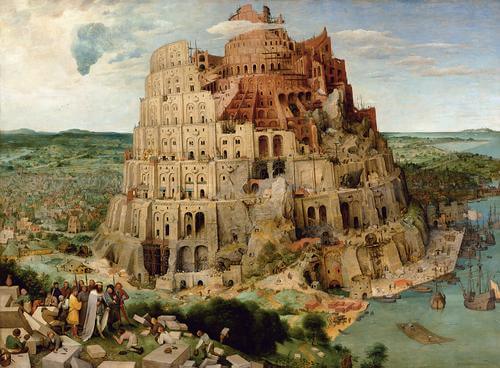
Pieter Bruegel the Elder has created as many as three famous art pieces based on a popular biblical storyline. According to the artist's vision, it is not language barriers that are to blame for the failure that befell the construction, but mistakes and poor-quality building materials. At first glance, the huge structure seems strong enough, but upon closer inspection, the secret of the painting is revealed. You can see this artwork in the Kunsthistorisches Museum in Vienna.
22. The Garden of Earthly Delights by Hieronymus Bosch (1500-1510)

The Garden of Earthly Delights, the best art of all time, is the most monumental triptych by Hieronymus Bosch, painted by the artist between 1500 and 1510, currently located in the Prado Museum in Madrid. The triptych is literally overflowing with figures, fantastic constructions, monsters, caricatures of reality, which will take at least a month to examine in detail. The phantasmagoric surrealistic world created by Bosch is absolutely incompatible with any of the existing religions.
23. Geopoliticus Child Watching the Birth of the New Man by Salvador Dalí (1943)

Another one of well-known artworks of Dali's prophetic gift is now in the Salvador Dali Museum in St. Petersburg, Florida. The Renaissance figure in the lower right corner of the picture is an allegory of the Old World, once capable of great accomplishments, living out its last days. Dali depicts the entire civilization of the Old World as a rather biological process, while in the other hemisphere, a New Man is about to be born.
24. Blue Dancers by Edgar Degas (1897)

Degas was a big fan of ballet, which is why he is called the artist of ballerinas. Blue Dancers dates back to the late period of Degas's work, when his vision weakened, and he began to paint in large spots of color, attaching paramount importance to the decorative organization of the surface. Today the painting is in the Pushkin Museum in Moscow.
25. The Kiss by Gustav Klimt (1907–1908)

The kiss is one of the first works of art in L'Art Nouveau or modern style. This painting, almost entirely done in gold tones, is one of the most striking artworks of the style. You can see this famous piece of the Austrian artist in Österreichische Galerie Belvedere inVienna.
26. Impression, Sunrise by Claude Monet (1872)

The name of this painting Impression, soleil levant with the light hand of the journalist L. Leroy became the name of the artistic movement. The painting was painted from life in the old outport of Le Havre in France. Today, this iconic work of the impressionist Claude Monet adorns the Musée Marmottan Monet in Paris.
27. The Scream by Edvard Munch (1893)

The Scream is an iconic work, one of the most famous paintings, of Norwegian expressionist Edvard Munch. Between 1893 and 1910, he painted 4 different versions. This painting, now in the National Gallery and at the Munch Museum in Oslo, is one of the first in a style in which realism is minimized to give more freedom to emotions.
28. The Starry Night by Vincent van Gogh (1889)
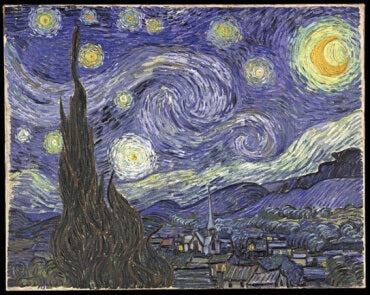
Van Gogh's Starry Night is one of the most most famous paintings in post-impressionist culture. It is currently on display at the Museum of Modern Art in New York. Unlike most of Dutch artist's paintings, Starry Night was painted from memory. At that time, Van Gogh was in the hospital of Saint-Remy, tormented by fits of madness.
29. The Great Wave of Kanagawa by Katsushika Hokusai (1831)

Hokusai's The Great Wave of Kanagawa, also known as The Great Wave or The Wave, is one of the most famous paintings of Japanese master. It is part of a series of 36 ukiyo prints of Mount Fuji. Hokusai did not depict the middle plan, so the illusion of depth is overwhelming. The woodcut is in the Metropolitan Museum of Art in New York.
30. Souvenir from Havre by Pablo Picasso (1912)

Souvenir from Havre marked the beginning of the synthetic period of the Spanish cubist Pablo Picasso: brighter colors appeared, not inherent in analytical cubism. Monochrome works gave way to color again. Still lifes predominated in the famous art pieces of this period; real objects were used to dilute the abstractness.
Which masterpiece from the offered art paintings by famous artists would you name the number one?






